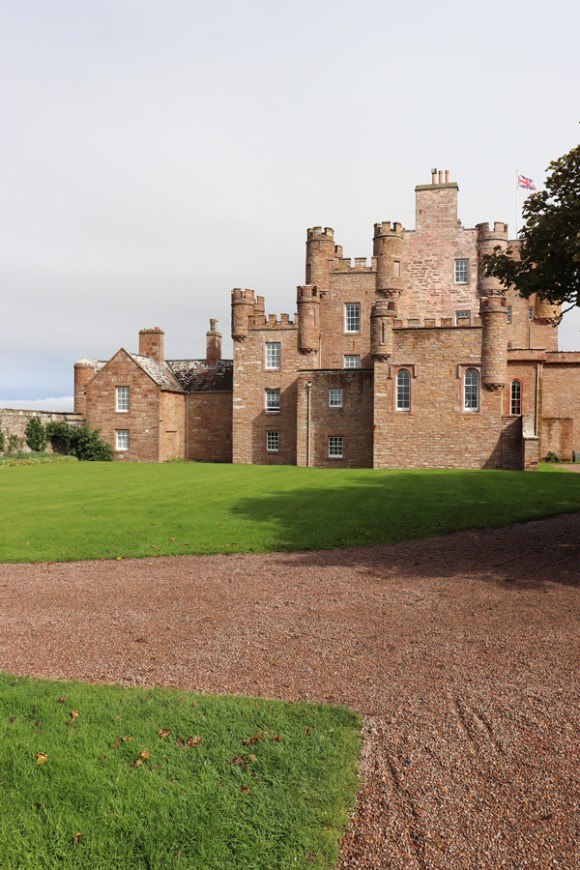The Definite Article

“That is possibly the funniest episode I have ever read,” emailed the much missed Min Hogg, Founding Editor of The World of Interiors, in response to a descriptive summary of a group visit to a certain castle in Sussex. Said summary included a luxury coach breaking down, a shuttered up gothic castle, a game septuagenarian scaling a battlemented wall, a mass trespass into the castle, a hungover hostess lying in a four poster bed… and then things went from bad to worse… Fortunately, a visit to The Castle of Mey is less turbulent.

“It’s very romantic,” notes heritage architect John O’Connell, “and the walled garden is beautiful.” Teetering on the edge of the world, or at least the top of Britain, overlooking Hoy, the second largest Orkney Island, is the only private residence The Queen Mother ever owned. In August 1952, just widowed, she bought the derelict Barrogill Castle for a token £100 from a local landowner. It was love at first sight, and who could blame Her Late Majesty? It helped that her great chum Lady Doris Vyner just so happened to live next door, or rather next estate, at The House of the Northern Gate.

Following a three year reconstruction, The Queen Mother spent four weeks every August and 10 days every October at The Castle of Mey, as she rebranded it, right up to her death in 2001 aged 101. She furnished it simply with purchases from local antiques shops complemented by a few family pieces. And a Linley occasional table. Curtains are draped below bathroom basins in that upper class domestic fashion. Prince Charles continues the holidaying tradition and stays in the castle for 10 days every July. The building dates from the late 16th century except for the double height front hall which was added in 1819 to the design of William Burn for James Sinclair, 12th Earl of Caithness.








Elizabeth Angela Marguerite’s younger daughter wasn’t just so keen on The Castle of Mey. Despite having a bedroom named in her honour, Princess Margaret never slept in the castle, preferring the luxury of the Royal Yacht. The Queen Mother’s favourite colour, Phoenix Blue, is everywhere from picture frames and towels to her raincoat on display in the front hall. There’s a well stocked drinks table in the drawing room. “The Queen Mother’s best loved tipple was one measure of Gordon’s Gin and three measures of Dubonnet served with lemon and ice,” explains her close friend Major John Perkins. He’s still a regular guest at the castle. “She always had ice in drinks and used her fingers, claiming ice prongs were an American invention!”

“The Queen Mother frightfully loved picnics,” he continues, “but when she formally dined in the castle, the seats on either side of her were called the ‘hot seats’ for special guests. At the start of the meal, everyone spoke to the person on their right and then swapped to the person on their left. That way no one was left out of conversations. She rang a bell for the next course to be brought out. Her three corgis would bark at the same time. After dinner, the gents would remain in the dining room drinking port, while the ladies would withdraw to the drawing room. If the gents lingered too long, The Queen Mother would start a rousing rendition of ‘O Come All Ye Faithful’! That meant get packing!”

The Major adds, “The Queen Mother had a terrific sense of humour. She was highly highly intelligent. She met all the world leaders of her time except for Hitler, Mussolini and Stalin.” On décor, “The Queen Mother didn’t like suspended lights. She liked soft lamps which cast more flattering light and shadows. The castle is exactly as she had it as her home. We haven’t added posh stuff!”



































































































































































































